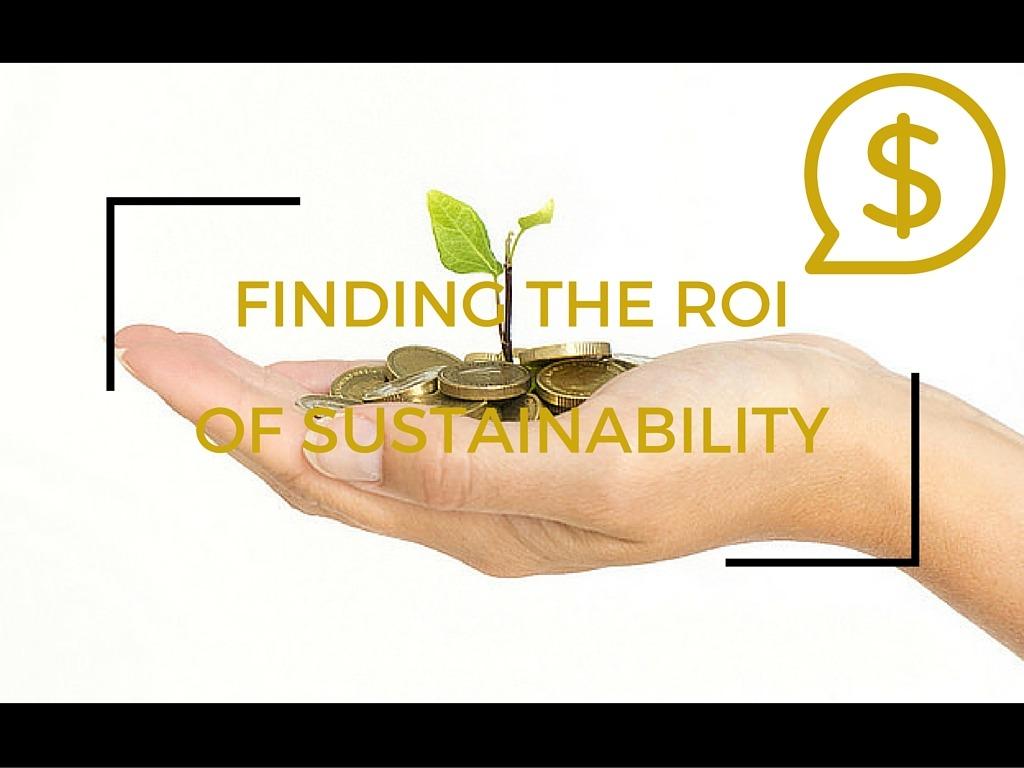Policy Points: Support Paid Sick Time, Just Trade and More


By Richard Eidlin
Voluntary corporate sustainability initiatives and social enterprises are essential but are not game-changers by themselves. In addition, we need laws and regulations that guide our economy toward sound, long-term decision-making, with full recognition of social and environmental externalities. As business leaders, we can and must support policy changes to help make the economy more sustainable.
A sustainable economy will depend on policies that will help advance change on a societal level. Here are two important policies that can do that -- and another action that can help shift the debate on many more. Here are three ways concerned business people can engage:
1. Support healthy families with paid sick time
Last month, the American Sustainable Business Council (ASBC) met with Sen. Ron Wyden (D-Ore.), who announced he will co-sponsor the Healthy Families Act, a bill which would let workers earn up to 56 hours of sick days, earning one hour of paid sick time for every 30 hours they work. Wyden, the ranking member on the Senate Finance Committee, marked the bill’s 29th co-sponsor. Along with the bill’s sponsor, Sen. Patty Murray (D-Wash.), the bill now has the declared support of 30 senators. The companion bill in the House has 122 co-sponsors.
What’s at stake: Every year, businesses lose $227 billion from lost productivity, either when employees miss work because they are sick, or when employees report to work but are so sick they cannot perform as well as possible -- what’s known as “presenteeism.” While some employee illnesses are unavoidable, the best way to address these is not to make workers come in when they are not physically able to work -- and could risk getting other employees or customers sick. Requiring earned sick days will keep employees healthier and more productive, while alleviating the costly problem of employee turnover by letting workers know they are valued.
What you can do: The Healthy Families Act has support in both houses of Congress, but more businesses need to step up and show they recognize the long-term benefits of good workplace practices like earned sick days. Show your support for the Healthy Families Act here.
2. Hold the president to his promise on trade
Earlier this year, Congress voted to give President Obama “fast-track” authority to negotiate trade deals that cannot be amended by Congress. Recent negotiations in Hawaii that included trade leaders from 12 Pacific nations failed to reach a final agreement on the Trans-Pacific Partnership (TPP) trade deal.
According to reports, negotiations stalled over dairy and auto trade issues, as well as debates over certain drugs. However, some negotiators claimed there had been more movement toward a finalized deal, and one claimed that “98 percent [of the deal] is concluded.” More negotiations could be held later, although some pundits think that the upcoming presidential election could make passing a final deal through Congress less likely.
What’s at stake: President Obama has claimed the TPP will be “the most progressive trade agreement in history,” and pledged it will lead to raised labor and environmental standards among its signatories. However, considerable concerns remain that the deal -- which encompasses nations accounting for 40 percent of global GDP -- will simply allow a race to the bottom on smart regulations, even allowing multinational corporations to sue governments in an international tribunal if regulations adversely affect their profits. Trade should support stronger standards that make the economy stronger over the long term by protecting our environment and supporting fair treatment of workers.
What you can do: The president has a chance to show he stands by his words, and will not accept a trade deal that does not advance stronger labor and environmental standards. Businesses need to ensure he’s held to that promise. Urge President Obama to stand firm and only support a sustainable TPP.
3. Attend the Sustainable Business Policy Summit
ASBC’s Fourth Annual Sustainable Business Summit kicks off next month in Washington, D.C. This three-day event offers businesses from around the country a chance to exchange views with others and meet with policymakers from Congress and the administration. The summit brings together responsible business leaders from across the country to influence the policies that will help make the American economy more vibrant and just.
What’s at stake: When businesses speak, policymakers listen. With Congress and the White House searching for ways to strengthen the economy, address climate change and break the political paralysis, the role of sustainable business has never been as important. As the presidential election draws near, the Summit offers valuable insights into how policy will evolve in 2016 and how your company or organization can help shape the agenda.
What you can do: Space is limited and this event always sells out, so interested businesses should make sure to register now to make sure they can secure a spot.
Policy Points is produced by the American Sustainable Business Council. The editor is Richard Eidlin, Vice President – Public Policy and Business Engagement.
Image credit: Flickr/Dr. Farouk
Bic Back in Headlines for Sexist Advertisement


Bic celebrated South Africa’s National Women’s Day with a surprisingly ironic misogynistic advertisement. The pen-manufacturing company posted the ad of a woman, presumably a white-collar worker, smiling with her arms crossed and the words, “Look like a girl. Act like a lady. Think like a man. Work like a boss,” hovering next to her.
The ad, as one can imagine, didn’t sit well with social media users, and Bic South Africa swiftly responded by taking down the ad. But the firestorm had already started. Facebookers had a field day commenting on the post, as the Johannesburg paper the Sunday Times reported.
“Why am I expected to see the world through a masculine lens? Why am I expected to ‘think like a man’ but not expected to ‘act like a man’ on my so-called manly thoughts?” one commenter asked.
This isn’t the first time Bic’s made the news for sexist advertisements. In 2012, the company introduced pink “for her” pens, which were smaller and designed to fit a woman’s hand.
The sexist marketing was met with a lot of criticism -- most notably from Ellen DeGeneres, who made a parody advertisement saying you can use the pen to “write down a grocery list, or even recipes for when you need to feed your man.”
https://www.youtube.com/watch?v=eCyw3prIWhc
Bic apparently didn't learn its lesson in 2012. After the social media storm hit on the most recent ad, the company swiftly deleted it. Unfortunately it failed in its first attempt at an explanation. Bic said the quotes were taken from a women in business blog and was meant “in the most empowering way possible and in no way derogatory towards women.”
It quickly removed that post as well after the reception failed to satisfy those outraged by the ad. The company then finally wrote an apology post: “Let’s start out by saying we’re incredibly sorry for offending everybody -- that was never our intention, but we completely understand where we’ve gone wrong. This post should never have gone out. The feedback you have given us will help us ensure that something like this will never happen again, and we appreciate that.”
Maybe Bic is influenced by the 1970s advertisements of the “Mad Men” era, but social media commentators feedback proves that won’t fly in this progressive of a day and age.
Image courtesy of Bic/Facebook
Aging Water Pipelines Sicken Residents in Flint, Michigan


While California's drought dominates the headlines, another severe water problem is becoming more and more prevalent in the U.S.: aging pipes. Poor water-piping infrastructure is leaving residents in certain cities forced to drink and bathe in water loaded with high levels of copper, lead and E. coli.
Flint, Michigan, one of the cornerstone examples of a city struggling to keep up its infrastructure, provides its residents with contaminated water from a local river. Flint officials had to gamble with water quality and depend on the murky Flint River to supply the residents with clean water after outsourcing to the nearby Detroit Water and Sewage Department became too expensive for a struggling city.
Flint has relied on Detroit water since 1967, but as the population of the two metropolitans started to shrink, the price of the water became unmanageable. In 2004, Detroit charged Flint just over $11 million per million cubic foot of water. But in just nine years, that rate increased by 73 percent to more than $19 million per million cubic foot.
A city that once thrived thanks to the success and headquarters of General Motors, Flint was hit hard when GM fled the area and headed 66 miles west to Detroit. Flint's unemployment rate has steadily climbed since the turn of the century, reaching a high of 25 percent in 2009. Families abandoned their houses in search of other work opportunities, pushing the population down and the tax funds dry. Without tax revenue, the city can’t appropriate proper funds toward building up the its water-piping infrastructure.
Genesee County, where Flint serves as the county seat, is building a pipeline in conjunction with other state counties that would connect Lake Huron to mid-Michigan. The Karegnondi Water Authority pipeline won’t be completed for another year. For the time being, elected officials thought it best for the city to treat its own water from Flint River, at a cost of $2.8 million annually, a great deal less than the $12 million it would have to pay Detroit for water.
Residents, however, have immediately felt the sacrifice the city officials made to save money until the pipeline is built. The water tested positive for fecal coliform bacteria, which forced city engineers to increase the amount of chlorine in the water -- causing high levels of trihalomethanes, which put the city in risk of violating the Clean Water Act.
According to the Atlantic, a family riddled with sickness likely linked to the water quality sent in the water to be tested. Marc Edwards of Virginia Tech found that the water had lead contents of 13,000 parts per billion — the EPA suggests keeping lead content under 15 parts per billion. None of the 30 samples the family sent in were safe to drink.
In 2013, the American Society for Civil Engineers awarded the U.S. with a “D” in the drinking-water category on its report card for America’s Infrastructure. The report also found most of the country’s pipelines are “nearing the end of ... useful life.” Estimates have suggested replacing the pipes could cost more than $1 trillion — roughly 5 percent of the nation’s debt.
Flint isn’t the first place to be concerned with water quality. Last summer, Toledo, Ohio, residents were told not to drink tap water after tests showed high levels of microcystins — a bacteria that causes fever, headaches, vomiting and, in extreme cases, seizures. The third largest city in America could face problems on par with Flint's, as Chicago’s lead service pipelines are aging fast and starting to see a spike in contaminated tap water.
Flint officials had to make a decision, as the New York Times put it, to have water either “cloudy or costly.” The new water pipeline that will service the city, starting in an anticipated 2016, will bring water from Flint’s previous provider: Lake Huron. It will be a welcome change from Flint River, which has been littered with everything from dead bodies to an abandoned car.
Image credit: Flickr/Michigan Municipal League
Make your Real Goals Attainable: Be Productive in the Way You Want to Be


By Laura Morrissey
Often at work we are caught up in projects that, although we want to care about them, given the choice we would be working on something entirely different. For a lot of us, our goal is to produce meaningful work at some point in our lives. However, the plan for meaningful ends up taking the back-seat when there are day-to-day urgencies to deal with first: answering that email, calling a client, meeting a deadline.
This urgent work ends up taking over from the meaningful work -- work that is important for our personal development and getting us where we want to be in life.
Make important tasks urgent
Anybody can do this. Important tasks that contribute toward meaningful work can be given priority alongside your urgent day-to-day jobs.
Our days are structured. Maybe the old-school calendar of the past is nothing more than a decoration on the wall, but we have other technological tools that give structure to our days. The weighting that we put on these organizational mechanisms means we can have as much or as little free time as we want, but most of the time we don't end up doing much more than what is obliged by our to-do lists.
If you want to get the ball rolling on a meaningful personal project, then set it up like an official piece of work. This means a deadline -- one that you tell others about as a reminder/extra pressure. Give yourself a reward for hitting the deadline on time if you think this will motivate you.
If you make your project compulsory within your day, then you will start to notice some advancement. Even if you are scared about the details of your work or unsure what it is exactly that you want to create, just give it a go but go easy on yourself. Life always begins one step outside of your comfort zone.
The demon of distraction
Distraction in the age of technology may be very different from how it once was, but distractions have always been around. In the 19th century, philosopher Friedrich Nietzche wrote in "Unmodern Observations" that "we can seek out distractions in order to stay mentally busy so we can avoid facing up to the big questions" -- like whether or not we are actually living lives that we find genuinely meaningful. We work best when we have time to focus and bring about creative/innovative thinking, and we instinctively find distractions in interruptions and temptations.
While browsing online or speaking to colleagues are no doubt distractions, you don't need to shut yourself in a cave in order to get your work done. External annoyances can distract, but we also have an internal urge to procrastinate in order to not focus on what matters the most, like a subconscious self-sabotage.
Work that feels productive, such as work from your paid job, can be distracting too -- just because it can stop us from thinking about or taking part in what we really want to be doing. It is a modern day myth that we need to feel motivated enough to do important work. Instead force yourself to ignore distractions, this is when you will sit down and work on what matters most to you.
Warm up first
It's not just the athletes and singers of the world who need to warm up before engaging in their craft. A good warm-up routine becomes the best habit you can have in terms of mental preparation.
Whether you're a creative or an innovator, your work will benefit from a warm-up routine. This can simply be a pattern: going for a walk, drinking a coffee, or reading up on some news from within your area of interest to spark your motivation. This can make it easier to get into your work flow, regardless of where you are.
It's fine not to always be optimistic
"It doesn't matter if the water is cold or warm if you're going to have to wade through it anyway," said French geologist and philosopher Teilhard De Chardin in the early 20th century. In other words, whether you feel good or bad about it, you're going to have to do it.
Of course we need a certain degree of optimism and confidence so you can generate and keep up motivation. We are bombarded with self help books and articles and yes all the research suggests that positive thinkers do better in their professional lives. However, intense optimism can backfire. It can be damaging to you if it means you don't think decisions through properly and stifle any opportunities to go the extra mile if you feel that you are going to succeed anyway.
So, if you aren't going to be optimistic all the time, then you're going to be pessimistic? Wrong. The answer is realism. The balance of optimism and pessimism. Be considered. What is going to give you the best chances of success? Then do all that you can to try to achieve this.
Likewise, pessimism can also dampen any chance of success. Don't surround yourself with negativity in the form of people, interests of events. Our brains do have a negativity bias. Negative effects resound more strongly in our mind and are more likely to infiltrate our thinking. There needs to be a balance of positivity and negativity, and not just an even one. This needs to work in factors of five. One negative thought, balanced by five positive ones. Furthermore, this needs to be constant in order to guarantee motivational success. One day of extreme positivity with good news is a hopeful occasion and might tip you into overly optimistic thinking the next day, followed by a week of negativity if expectations are not met. Every day allow yourself some negativity and worry, but try to make positivity your default feeling about what you want to achieve.
What do we do when there seems to be little to feel positive about? Remember that you are you. You don't need to be inspired or deterred by anything that anybody else in the world is doing or has done. Be your own inspiration. Problems can also be reframed, what seems detrimental may not be so bad if you reframe it differently. Tip your own scales towards motivation. Record all that you have achieved already; related to your work or unrelated and revisit this frequently.
Image credit: Pixabay
Laura Morrissey is a writer for Disc Assessment. She shares tips for both employers and employees in working to the best of their ability together. Her specialist areas are motivation and team building.
Finding the ROI of Sustainability


This article is part of a series on “The ROI of Sustainability,” written with the support of MeterHero. MeterHero helps companies and organizations offset their water and energy footprints through consumer engagement. To follow along with the rest of the series, click here.
By McGee Young
How can we measure the ROI of sustainability? This series explored that question by examining case studies of companies, organizations and communities that have successfully implemented sustainability programs. Is ROI simply a business calculation? Is the dollar value of sustainability -- as defined by conventional business metrics -- the best way to measure ROI?
We also brought ulterior motives to this question. MeterHero – as a concept – wants to challenge conventional notions around sustainability. We want to create a new framework for valuing water and energy. We want a future where we don’t have to battle big incumbent utilities for small, incremental changes in water and energy sustainability.
In our Stories & Beer Fireside Chat and in our essay on collaborative conservation, we previewed some of the key themes of the series. At the Sustainable Brands conference, we interviewed some of the leading practitioners of sustainability to learn more about how their companies and organizations measured sustainability ROI. We also offered tips to sustainability professionals on how to build programs that would survive and thrive. In this final essay, we lay out in more detail how we plan to create a new ROI of sustainability around water and energy.
Three things we believe
1. We believe that water and energy conservation is worth more than your bill “savings.” Your monthly utility bill represents the internalized costs of production plus certain profits for the supply chain that brings you your water and energy each day. The externalized costs – climate change, water scarcity, pollution, land destruction – are almost entirely absent from your bill. Therefore, when you save water and energy, the only value you are realizing is the profit value that has been defined by your utility.By contrast, we believe that reducing your water and energy footprint creates enormous environmental benefits. You should be rewarded for your efforts -- independently of your utility’s assessment of these benefits. If they don’t care about pollution, they certainly don’t care to recognize sustainable actions. But when you install solar panels, when you use less water, when you insulate your home against the weather, you do a tremendous service to environmental sustainability.
To recognize this value, MeterHero pays people to save water and energy. Our software captures your home’s water and energy savings (using your utility’s own measurements) and issues cash rebates for your conservation, funded by companies who share our environmental values. By pricing water and energy conservation independently of your utility, we can reward you for reducing your impact on the environment.
2. We believe that monopoly utility business models can be disrupted through software. The clean-tech sector has long been enamored with physical products that promise a less polluting alternative to fossil fuels. Whether it’s algae as jet fuel, a higher-performing solar panel, or a newer/better nuclear reactor, we’ve seen many hundreds of billions of dollars poured into deep R&D. Several technology cycles later, CO2 concentrations are higher, global temperatures are hotter, and the same basic utility infrastructure exists to deliver us water and energy in the same way as before. By all measures, investors are still wary of the clean-tech sector – the ROI is too uncertain.
But what about software? To date, software has been deployed nearly entirely within the existing utility valuation framework. Companies like Opower provide software services to utilities to promote conservation. Building analytics software packages from companies like Johnson Controls and Lucid promise more efficient use of water and energy. But software is most definitely not eating the water and energy sector … yet.
We believe that software can disrupt the utility sector, but not by providing services within the existing value framework set by utilities. Water and energy need an abstraction layer – apart from the physical properties of the commodities themselves – in order to unlock value that is currently not recognized by utility providers. By abstracting the value of water and energy from the physical delivery of the product itself, we can unlock massive innovation potential to serve goals like conservation and sustainability.
3. We believe that disaggregated systems will create incredible value in coming years. Brittle and fragile, the utility ecosystem is poorly equipped to respond to environmental disruption. Hurricanes Katrina and Sandy reminded us how quickly our major cities can become incapacitated. Utility systems across the United States are in desperate need of investment. As much as 20 percent of drinking water is lost to leaks in some cities while others require massive amounts of energy to supply potable water to thirsty populations.
Disaggregating utility systems will create vast new markets for water and energy products. In most areas, the antiquated electricity grid barely accommodates rooftop solar. But in certain test locations, smart micro grids are organizing energy production and consumption on a peer-to-peer level. With onsite energy storage becoming market-ready, opportunities to fully disconnect from centralized providers are inching closer to the mainstream.
MeterHero connects people across the country and around the world in the common cause of water and energy conservation. It doesn’t matter which utility provider collects your bills or provides your services. It doesn’t matter how much you are charged for energy and water. You don’t have to wait for your utility to adopt a conservation program. By making MeterHero universally available, we aim to both disaggregate existing utility services and create a new aggregation layer of value that exists independently of any particular utility. As a decentralized network, we can capture the value of conservation for our users and empower them to create impactful change in their communities.
The ROI of sustainability
We began this series with more questions than answers. What does it even mean to calculate an ROI for sustainability? Is sustainability in and of itself a meaningful concept? Can you really calculate a value on a concept so nebulous? If there are no common definitions or standards, is it even possible to compare the success of one program to another?
The tricky thing about measuring the ROI of sustainability is that we won’t really obtain measurable outcomes until some point in the future, and even at that distant point we’ll be using counterfactuals to make our calculations. That’s why most companies interviewed for this series talked about specific cost-savings measures they’ve implemented under the banner of sustainability. And while goals like zero-waste are laudable, whether they create a sustainability ROI is more debatable.
We would like to leave this series with a final question to ponder. Should sustainability programs be designed to preserve today’s systems in the face of tomorrow’s uncertainty, or should they be designed to change today’s systems to better adapt to an uncertain future?
Image credit: Flickr/Pictures of Money
McGee Young is founder and CEO of MeterHero, a water and energy conservation platform. MeterHero allows companies to fund conservation rebates that consumers earn as they reduce their water and energy consumption. McGee was a winner of the Midwest Social Innovation Prize, a finalist in the Clean Energy Challenge, and his company was selected for the charter class of startups in the Global Freshwater Seed Accelerator. Prior to MeterHero, McGee founded H2Oscore, while also serving as an Associate Professor of Political Science at Marquette University. He is the author of “Developing Interests: Organizational Change and the Politics of Advocacy.”
Dissecting the Farm-to-Table Fable


The vibrant, mega-million-dollar farm to table movement is under increasing scrutiny these days. In San Diego, where produce is an $1.8 billion industry and year-round farmers markets can be found in almost every neighborhood (one of the few financial spinoffs of climate change, perhaps), the farm-to-table concept is getting a bad rep.
Farmers and ranchers say that the system doesn't deliver. Or, more precisely, the restaurants that have for years cashed-in on the concept aren't paying for what they get.
The story of San Diego's farm-to-table dilemma first broke earlier this year, when San Diego Magazine columnist Troy Johnson interviewed a number of farmers and ranchers who said they were finding their brands listed on upscale menus where they hadn't sold their products. Some had been turned down and then found their produce was being touted on the menu; others said they had never actually been contacted by the restaurant. One farmer had actually confronted the restaurant and later been compensated for what he said was fraudulent representation.
And yes, Johnson's story got immediate attention. The well-known local food critic instantly found himself in the hot seat from restauranteurs who could show that they had a long-standing and successful farm-to-table relationship with local growers. In a subsequent article, he unearthed his research and gave names, dates and accounts of some of the complaints he had heard and investigated.
"Initially, I didn’t want to write the piece. It risked casting the entire restaurant industry in a negative light because of a few ethically challenged morons," defended Johnson.
But his column got me thinking, nonetheless. What is it that makes a farm-to-table enterprise work? And why do some fail? And why San Diego County, of all places, which nurtures the perfect climate for hard-to-find fresh produce like artichokes and abundant, succulent tomatoes and citrus?
To get to the heart of the spiny question, I turned to another region that is world-renowned for its farm-to-table programs: the Province of British Columbia, Canada.
British Columbia doesn't grow quite the same kinds of crops as Southern California, but its economy is bolstered by just as many (probably more) small farms and ranches that provide a bevy of local produce to cities like Vancouver, Victoria, Kelowna and Penticton and surrounding areas. It also has an additional caveat: a vibrant tourism business that draws business from around the world, just like San Diego.
B.C.'s farm-to-table movement got its start in the famed Kelowna area, a city at the heart of the Okanagan Valley, the province's key wine-producing region. As in San Diego, farm-to-table programs make sense in the Thompson Okanagan. The region supports a $1.7 billion regional tourism industry and, in addition to several picturesque cities, is populated with more than 5,000 different farms. Many of those small farms are located within an agricultural land reserve that ensures B.C.'s vital produce and wine industries continue to flourish.
To get a sense of why B.C.'s farm-to-table program has continued to grow, I reached out to its Minister of Agriculture, Norm Letnick. Letnick was elected to the position in 2011 and is from Kelowna, so he is fairly familiar with the farm-to-table program's history in this area.
The first distinction about B.C.'s farm-to-table program, said Letnick, is that it is regulated.
"It is part of the Buy Local program," he said. The Buy Local program is a regional-specific incentive program that helps to promote B.C. businesses. It is "kind of a co-op advertising program between the government and the agri-food industry, where where we put in 50-cent dollars matching 50-cent dollars coming from the industry to help promote the purchase of local produce and agri-foods in the province," explained Letnick, who noted that its broad structure leaves plenty of room for different businesses to partner and promote their skills and their products.
"So, someone in a restaurant might want to connect with, say, a farmer and promote cucumbers." The restaurant and the farmer would pair up and apply for funding under the Buy Local program to promote the partnership. Carl's regionally famous cucumber business would receive publicity just as would the Kelowna restaurant that wants to use the product.
The farm-to-table concept has been so successful that each year the Okanagan wine industry incorporates it into its wine festivals. Kelowna, Penticton and other Thompson-Okanagan cities sponsor a listing of restaurants that network with and promote local farms and wineries.
Although the province allocates funding for the Buy Local program ($2 million per year; $6 million since its start in 2012), applications are adjudicated through a not-for-profit organization, the Investment Agriculture Foundation of British Columbia (IAF), which reviews applications and funds eligible applicants. The same funding structure is used for a variety of other sub-categories that help to promote other industries, such as B.C.'s vitally important fishing industry.
"A big part of it is increasing the awareness of the purchaser as to where their food comes from," said Letnick. Perhaps a couple is dining in an Okanagan restaurant and are about to order a couple of steaks. "The Buy Local maybe paid some money for a tent card that explains that particular steak they are eating actually came from Joe’s Farm 20 miles outside of where the restaurant is," said Letnick, "and here’s Joe’s website and you can click on it to find more information about Joe and Joe’s farm practices."
The program builds consumer awareness not only by promoting the product, but also by educating the patron on the local businesses and industries that make the area successful.
But there's a catch, said Letnick. "The proponents have to file reports into the IAF." They also are required to complete marketing tasks, like campaign advertising that ensures that there is clear accountability for the money and the intent used.
Letnick points out that since companies are incentivized to apply for funding, they are also subject to regulation and oversight. There's also much less chance that bizarre requests, such as what Johnson highlighted in his recount of one farmer who was expected to provide, on short notice, select cuts of pork as a condition of purchase (without the offer to compensate for the rest of the slaughtered pig).
"[It] has its impact that is measurable, and at the end of the day collectively and cumulatively it helps to promote all of B.C.’s products to consumers," said Letnick.
Truth be told, there are many other U.S. and Canadian regions that promote farm-to-table (also called farm-to-fork) programs. And as Johnson pointed out, not all of Southern California's farm-to-table restaurants are guilty of mismanagement or marketing mistakes. But perhaps the takeaway from this million-dollar B.C. program is that successful marketing partnerships benefit from oversight and, just as importantly, incentives that require them to show accountability. As Letnick pointed out, the success of one small partnership benefits the industry as a whole. Conversely, the appearance of fraud or mismanagement can as well.
San Diego County does seem to be trying to promote new ventures in the agricultural sector. In 2013, the county proposed steps to reduce regulations and find ways to promote "more opportunities for agricultural ventures, such as microbreweries and cheese-making, to further support small-scale agricultural operations and promote agricultural tourism throughout the unincorporated portions of the county." This summer it held a comment session for the new ordinance.
Perhaps opening the door for new business concepts is the first step. But creating ways to incentivize accountability by making sure that farm-to-table programs give credit to both the producer and the benefiting presenter is critical to ensuring a growing and sustainable leisure and hospitality industry.
Image of restaurant prep: Farm to table in Vancouver, BC: Shinsuke Ikegame; Grapes: Kelowna09; Kelowna harvest cuisine: Megan Cole; Farm to table dinner, Nevada City, Paul Racko
Olsen Twins Sued for Not Paying Interns


America first fell in love with Mary-Kate and Ashley Olsen nearly three decades ago, through the role they shared as Michelle Tanner on the ABC sitcom "Full House." In an effort to circumvent strict child labor laws which set limits on how long a child actor may work, the fraternal twins took turns playing Michelle. They began their career in showbiz at only 6 months old.
Over the years, we watched Mary-Kate and Ashley grow from adorable toddlers into talented tweens and eventually into wildly successful young entrepreneurs. Through their company, Dualstar, the Olsens joined the ranks of the wealthiest women in the entertainment industry at a very young age.
Although Mary-Kate and Ashley Olsen have lived in the spotlight their entire lives, they have recently garnered a new kind of attention. Despite their billion-dollar empire, the twins have neglected to pay their interns and are now being sued.
A class-action lawsuit filed in Manhattan Supreme Court alleges the Olsens failed to pay 40 past and present interns. The lead plaintiff in the case, former design intern Shahista Lalani, claims she worked 50-hour weeks under horrible conditions and was offered neither pay nor college credit in return.
The Parsons New School for Design grad worked for the twins’ Dualstar Entertainment Group in 2012 under the head technical designer for the Olsens’ fashion label, The Row. According to reports filed with the court, Lalani worked 50-hour weeks, “inputting data into spreadsheets, making tech sheets, running personal errands for paid employees, organizing materials, photocopying, sewing and pattern cutting, among other related duties,” she told Page Six last week.
Lalani claims that she was even hospitalized for dehydration because of the job’s demands. “It was like 100 degrees outside. I’d just be sweating to death. I probably carried like 50 pounds worth of trench coats to Row factories.” (Click here to read Lalani's full interview with Page Six.)
The lawsuit claims that there were many other interns in Lalani’s position, and they should have been paid the minimum wage plus overtime because they were doing the same type of jobs as the paid colleagues without receiving academic or vocational credit.
Although Lalani never worked directly for the Olsens, she mentioned that she saw them occasionally at meetings and liked them. “They’re really nice people,” she said. “They were never mean to anyone. They’re business people.”
The Olsens’ Dualstar Entertainment Group is not the only wage-theft culprit. This case is the latest in a string of unpaid intern lawsuits. Similar claims have been made against companies such as Conde Nast, Hearst, NBC Universal, Viacom, Warner Music Group and Elite Model Management. Many advocates in the emerging intern labor rights movement believe that these internships violate state and federal minimum wage laws.
Internships of this kind have long been a staple in the media, fashion and entertainment industries. They are traditionally seen as a rite of passage, similar to hazing by a sorority or fraternity. The idea of toiling away day after day, doing menial tasks for a surly employer, is straight off the pages of "The Devil Wears Prada" script.
However, the idea of slaving away and compromising your integrity in an effort to join the ranks of the wealthy elite is pure fiction for most. In reality, these internships are simply exploitative. They are a way for companies to get their hands on free labor. These are companies that could very easily pay their interns a minimum wage and yet refuse to do so.
But there is also another group who is hurt by unpaid internships even more than the interns themselves: Anyone who cannot afford to do work for no pay. “It’s appalling to see unpaid internships continue to reign in fields like media, fashion and entertainment, where diversity is so desperately lacking and internships still act as a main pipeline for jobs,” Jessica Goldstein pointed out in this Think Progress article.
“We may not even know how many people are opting not even to apply because they see that the internship is unpaid, and they just self-select out of the application process because they know they can’t afford to work without compensation,” David Yamada, law professor and founding director of the New Workplace Institute, told Think Progress. “And when you dig deeper, there may be racial and ethnic impact, in terms of groups that generally have more socioeconomic challenges.”
The fact that former interns like Lalani feel emboldened enough to voice their objections to working without compensation is what is fueling the intern labor rights movement. If these lawsuits establish the legal precedent that they’re seeking, the landscape will change. Companies like Conde Nast have already eliminated their internship programs entirely. Perhaps Mary-Kate and Ashley Olsen will be next.
Related: Why Unpaid Internships Are Immoral BS
Image credit: Flickr/David Shankbone
Economists Ask If Energy Efficiency Is A Good Investment


As if we economists do not stir up enough trouble by pontificating on national monetary policy, we have now hit the hornet's nest on energy efficiency. Recent economic analysis points to energy-efficiency investments delivering as little as half of their promoted savings. This is more than a little upsetting to an environmental community attempting to protect humanity from global warming. Will we investigate Santa Claus next?
Economic questions about energy efficiency
Take two air conditioners and run them side by side. The less efficient one will use more energy. The more efficient one will use less. For engineers, that is all they need to know to validate that energy efficiency saves money.
We economists are such troublemakers. We want to research how energy efficiency actually works inside a home with real humans that pay a monopoly a monthly electricity bill. What this type of economic research has found is that energy efficiency is not an obvious money-saver.
How human behavior impacts energy efficiency
There are two key factors that impact the return on energy-efficiency investments. One is human behavior. For example, people buy air conditioners to be cool. They hate paying large electricity bills. So, those pesky humans make a totally rational economic decision: They buy a more energy efficient air conditioner, crank it to 70 degrees, enjoy cool air and keep their electricity bill from soaring ever higher.
Since less than one-tenth of 1 percent of consumers can correctly self-calculate their electricity bills (that arrives a month after they use their air conditioners), they have little economic basis to do anything other than focus on their thermostat and its ability to clearly message a spouse’s desire to be cool.
How utility pricing complexity impacts energy-efficiency investments
Electric utilities are the second key factor influencing energy efficiency ROI. Utilities are masters at making their prices and bill calculations highly complex. Price complexity distorts the ability of most consumers to make economically rational decisions.
Here is an example that illustrates how utility rate design can alter the ROI on energy-efficiency or renewable-energy investments. I am analyzing the return on renewable-energy and energy-efficiency investments for a medical office building. The building pays for its electricity through a highly complex utility rate in which half of the monthly bill is determined by something the utility industry calls a “15 minute non-coincident demand charge.” Let me try to explain how this type of price complexity can deter customer investment in energy efficiency and renewable energy.
Electric demand is the rate of electrical use. Non-coincident means a consumer is setting a higher rate of use at a time that does not align with the time period a utility is setting its system peak rate of use. For example, a consumer could set their rate of use at midnight in the winter when the utility sets its rate of use at noon in the summer. This is a big deal in allocating utility costs. Utilities want to charge more to customers who set their rate of use at the same time they set theirs. But a utility wants to charge customers less (or nothing) went they do not contribute to the setting of that utility’s rate of use.
Now let’s assume you invest in energy efficiency or renewable energy. You do so because you will reduce your energy consumption and you think you will reduce your demand. You think you will save money. But for one 15-minute period during a 8,760-hour year, your building could set a higher demand than estimated in calculating the ROI on an energy-efficiency or renewable-energy investment. Even if this demand occurs at a time when the utility’s system demand is not setting its own peak, you will face a year of higher electric bills!
Clear as mud right? Because it is not, this explains why home- and building-owners maybe underinvesting in energy efficiency and renewable energy. Investors are not attracted to investments that have a precept threat to the targeted rate of return. Utility pricing is too often a perceived threat because it combines the principal of “you can’t beat city hall” (in this case a monopoly utility’s complex pricing) and the principal of “fool me once shame on you, but fool me twice ...” Too many customers view utility pricing (and its regulation) as skewed toward the utility, and too many customers have invested in energy efficiency and have not seen the anticipated savings in their electricity bills as utilities raise rates and change rate designs.
Free utility customers!
How could we promote energy efficiency and investments in renewable energy by home- and building-owners? We economists have an obvious answer. Free consumers from complex utility-rate designs that create uncertainty for customer-owned investments in energy efficiency and renewable energy.
How would this work? The current regulatory process fundamentally designs rates to enable utility investments. Prices are designed to ensure that a utility’s investments delivers a target ROI. What if regulation were to focus instead on insuring that customer investment in energy efficiency and renewable energy delivered a target ROI?
Under such a system, the utility becomes a “network” provider. It profits not from its investments but from its role in enabling customers to profit from their own investments in energy efficiency and renewable energy. In effect, the utility becomes the integrator of customer-owned Zero Net Energy buildings that optimize building performance around cost and environmental impacts. The utility profits when the customer profits, and the utility profits when the customer achieves a lower environmental footprint.
Could the Clean Power Plan open the door?
The Clean Power Plan could open the door for states to adopt a customer-centric investment model to realize cost-effective and cleaner power generation. The Clean Power Plan charges states with designing plans to reduce global warming emissions. One path for a state would be to focus on paying utilities to shut down polluting power plants and to build power plants that pollute less.
An alternative path would be for states to shift the investment opportunity to consumers. The reason for doing so is because the most promising technology innovations in electricity generation and consumption (like the Nest smart thermostat, rooftop solar and LED lighting) are on the customers’ side of the meter. These technologies offer a path to lower consumer electricity bills plus reduced environmental impacts. In comparison, a utility-centric Clean Power Plan would focus on fossil fuel technologies that will not deliver reduced customer bills and will only deliver modest reductions in global warming emissions compared to our most polluting power plants.
Regulatory crossroads
The regulatory choice could not be more stark. One path will empower customers to invest in energy efficiency, smart building technologies and renewable energy. The other path will empower utilities to invest in natural gas power plants, a utility-centric “smart grid” and hopefully more renewable energy. The only path that leads to guaranteed lower electricity bills is to empower consumers. How regulators address this crossroads will shape our economy’s competitiveness and our ability to stop global warming.
Image credit: Flickr/Jan Tik
Not So Profitable: Who Lost Over $5 Billion On Fossil Fuels?


Fossil fuels are not always profitable. Take the California Public Employees' Retirement System (CalPERS) and the California State Teachers’ Retirement System (CalSTRS), the Golden State’s largest public pension funds, for example. They have lost over $5 billion on fossil fuel investments during the past fiscal year, according to a report by Trillium Asset Management.
Let’s first look at the coal investments. The two pension funds lost a combined $840 million from stock investments in the world’s largest coal companies during the fiscal year that ended June 30. That’s a lot of public investment to lose on a very dirty fuel. Trillium’s analysis indicates that BHP Bilton demonstrated the biggest dollar decreases at both pension funds.
When Trillium expanded the analysis to include the world’s 200 largest oil, gas and coal companies by carbon reserve, it came to the combined $5.1 billion estimated loss. That amounts to a 25 percent decrease in the pension funds’ coal stocks during the 12-month period. However, other stock investments by both pension funds increased.
"Fossil fuel stocks are volatile investments,” said Matthew Patsky, CEO of Trillium Asset Management. “Investors and fiduciaries should take this moment to reassess their financial involvement in carbon pollution, climate disruption and the financial risk fossil fuels plays in their portfolio.”
Senate bill would direct CalPERS and CalSTRS to divest from coal
There is a solution: divesting from fossil fuels. California State Senate president pro tem, Kevin de Leon, introduced a bill (SB 185) that would direct CalPERS and CalSTRS to divest from companies that have at least half of their revenue coming from coal mining for power plants. The bill would direct that both pension funds divest their investment portfolios of coal companies.
“These freshly incurred losses starkly demonstrate coal’s financial risk, and illustrate the potential benefits of SB 185 to California pensioners,” said Will Lana, partner at Trillium Asset Management.
By Jan. 1, 2017, both boards of CalPERS and CalSTRS would be required to file a report with the state legislature and the governor. The report would cover actions the pension funds have taken to divest from coal and recommendations to ensure the board is acting consistently with its fiduciary responsibilities. In addition, it would include a comprehensive assessment of the feasibility of divesting other fossil fuel investment funds such as natural gas and petroleum.
There are several reasons why the bill’s authors want the pension funds to divest from coal:
- Coal combustion to generate energy is the leading cause of the greenhouse gas pollution that causes climate change to occur. Utility coal plants in the U.S. emitted 1.7 billion tons of carbon dioxide in 2011. A typical coal plant emits 3.5 million tons of carbon a year.
- California gets very little of its power from coal. Coal accounts for about 8 percent of the state’s energy sources. The majority of the 8-percent figure comes from coal power imported from other states for Southern California municipal utilities.
“This bill is the right thing to do from both the economic and social perspective,” bill co-author, State Sen. Jerry Hill (D-San Mateo) told the San Francisco Chronicle. “We should be moving to sources of energy, and investments, that are socially responsible and will take us from the 20th century and into the 21st.”
Yes, indeed, divesting from coal is the right thing to do for both the planet and the public pension funds. Just say no to dirty coal
Image credit: Flickr/Kim Scarborough
Haute Couture Fabrics from Plastic Waste


By Sondra Kim
Plastic doesn’t go away. For one thing, most of the common products we use daily are made of it, or come packaged in it. Furthermore, as a waste this material is almost indestructible. It’s been around for about half a century, but managed to create the devastatingly huge environmental problem we’ve heard so much about. Just imagine: The amount of plastic we throw away each year is enough to circle the Earth four times.
While we can refuse plastic bottles and ban other disposable products attempting to make a small contribution to the environment, there’s a blind spot.
Things we wear
Textiles and plastic bottles are not as unrelated as we might think. Actually, 65 percent of the textiles we produce worldwide are synthetics, most of which are made of the same material that goes into ubiquitous single-use products. Contrary to the common belief, most PET is manufactured specifically to be made into fibers, not bottles. That means the environmental burden of plastic production and waste is a question of unsustainable practices in various industries, including fashion.The fashion industry itself is far from innocent: As the awareness about how our clothes are made grows, we get to know the true cost of the garments. The abuse of people and planet is the price that is paid for our addiction to bargain-price clothes. That’s why recent years showed a clear trend toward sustainability, closed-loop systems and cradle-to-cradle alternatives in the fashion business.
How do eco-conscious innovations reinvent the industry?
It starts with a mind-shift of how people should use resources and the reconsideration of a product lifecycle.One of the first sustainable steps that frontrunners in the textile industry are taking is the design of eco-friendly fibers. The idea of recycling plastic for yarn has been around for about 15 years, but China-based Dutch entrepreneur Monique Maissan explored it further.
In the minds of many fashion addicts, the words ’sustainable fashion’ have long been a synonym for ‘ugly fashion.' However, this concept is changing, and Maissan founded the company Waste2Wear as part of the change.
See for yourself: Waste2Wear fabrics were recently featured in the haute couture collection that opened Mercedes-Benz Fashion Week in Amsterdam.
Created by couture designer Monique Collignon, the collection became the first fashion show to display haute couture designs made of 100 percent recycled PET bottles. The designer chose Waste2Wear fabrics for her pret-a-porter Couture-Light Collection, also presented during the Amsterdam fashion event.
Responsibly-produced fabric for a single Couture Light dress takes 30 PET bottles out of the environment. It’s not hard to imagine the positive impact fashion can have, if almost the entire collection consists of elegant garments that are actually made of recycled plastic.
The collections received a standing ovation, leaving fashionistas and trend-setters wondering what the fabric, which flows like silk and drapes beautifully, can possibly have in common with a plastic bottle. It is plastic! It took a lot of effort to explore the capabilities of recycling technology that could provide the sustainable textiles that perform to the most exquisite standards.
The result, though, is worth it and doesn’t go unnoticed. Recently the Waste2Wear founder and CEO has been recognized with a prestigious business award, and this is not the first time. This year, the International Women’s Entrepreneurial Challenge Foundation will award a Chinese company for the very first time in the history of the award. The award distinguishes entrepreneurs who operate companies responsibly. A year ago, the company was awarded the European Economic and Social Committee’s Award for Sustainability.
It may have taken a long time for companies to understand the importance of business models that integrate social and environmental impacts, ethics, human rights and consumer concerns into their core strategies and operations, but we are actually on the verge of an era when pursuing sustainable practices becomes the norm. Well, a practice, that turns environmentally damaging waste into stunning textiles sounds just like a new standard for sustainable fashion.
Visit Waste2wear for more information.
Images: Courtesy of Monique Collignon.
Sondra Kim is a Shanghai-based environmental writer. Thinks in green, writes about sustainable fashion, lifestyle, recycling, and plastic pollution.